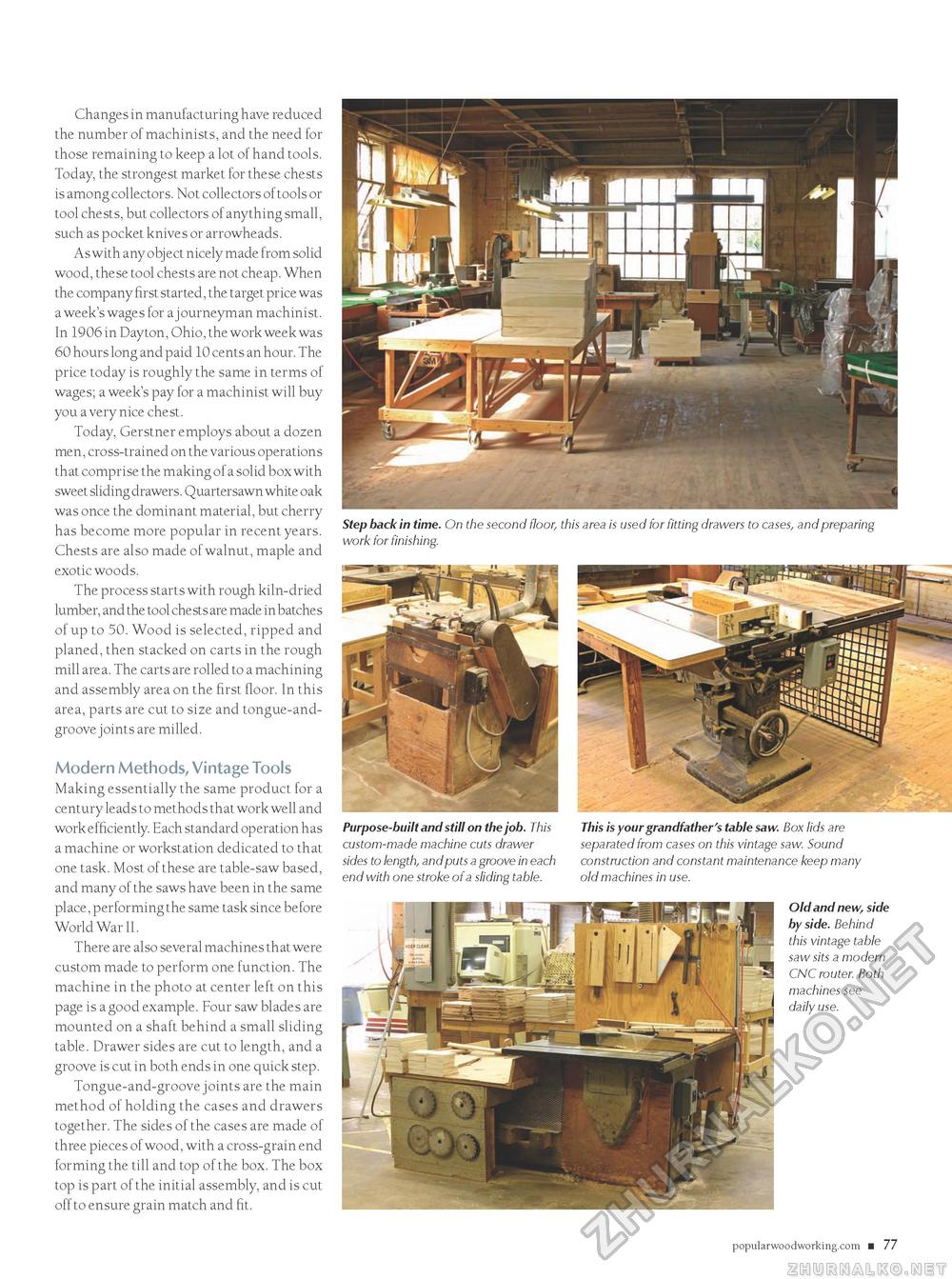Popular Woodworking 2008-04 № 168, страница 87
Changes in manufacturing have reduced the number of machinists, and the need for those remaining to keep a lot of hand tools. Today, the strongest market for these chests is among collectors. Not collectors of tools or tool chests, but collectors of anything small, such as pocket knives or arrowheads. As with any object nicely made from solid wood, these tool chests are not cheap. When the company first started, the target price was a week's wages for a journeyman machinist. In 1906 in Dayton, Ohio, the work week was 60 hours long and paid 10 cents an hour. The price today is roughly the same in terms of wages; a week's pay for a machinist will buy you a very nice chest. Today, Gerstner employs about a dozen men, cross-trained on the various operations that comprise the making of a solid box with sweet sliding drawers. Quartersawn white oak was once the dominant material, but cherry has become more popular in recent years. Chests are also made of walnut, maple and exotic woods. The process starts with rough kiln-dried lumber, and the tool chests are made in batches of up to 50. Wood is selected, ripped and planed, then stacked on carts in the rough mill area. The carts are rolled to a machining and assembly area on the first floor. In this area, parts are cut to size and tongue-and-groove joints are milled. Modern Methods, Vintage Tools Making essentially the same product for a century leads to methods that work well and work efficiently. Each standard operation has a machine or workstation dedicated to that one task. Most of these are table-saw based, and many of the saws have been in the same place, performing the same task since before World War II. There are also several machines that were custom made to perform one function. The machine in the photo at center left on this page is a good example. Four saw blades are mounted on a shaft behind a small sliding table. Drawer sides are cut to length, and a groove is cut in both ends in one quick step. Tongue-and-groove joints are the main method of holding the cases and drawers together. The sides of the cases are made of three pieces of wood, with a cross-grain end forming the till and top of the box. The box top is part of the initial assembly, and is cut off to ensure grain match and fit. Step back in time. On the second floor, this area is used for fitting drawers to cases, and preparing work for finishing. Purpose-built and still on the job. This custom-made machine cuts drawer sides to length, and puts a groove in each end with one stroke of a sliding table. This is your grandfather's table saw. Box lids are separated from cases on this vintage saw. Sound construction and constant maintenance keep many old machines in use. Old and new, side by side. Behind this vintage table saw sits a modern CNC router. Both machines see daily use. popularwoodworking.com ■ 77 CIRCLE #100 ON FREE INFORMATION CARD. |








